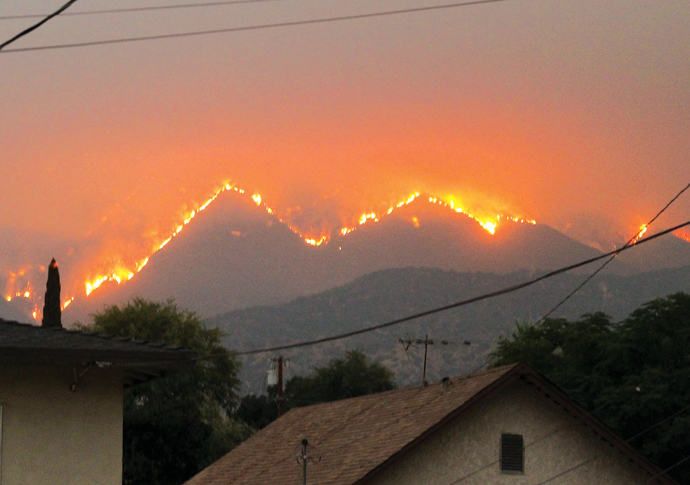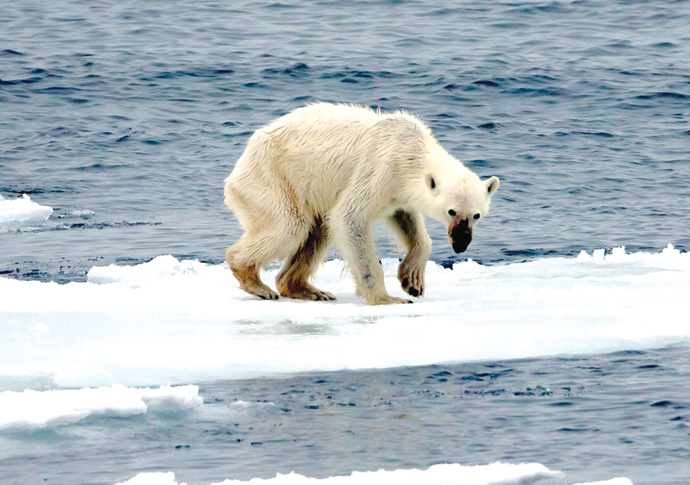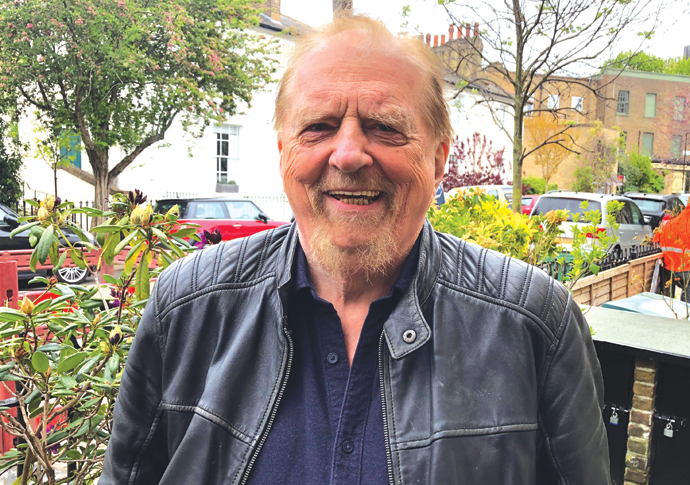Hot topic
Former war correspondent Gwynne Dyer has now taken on a bigger issue – climate change. But is it too late to combat it? Dan Carrier goes in search of solutions
Thursday, 25th April — By Dan Carrier

Bobcat Fire in Los Angeles [EDDIEM360 CC BY-SA 4.0]
THEIR eyes shone at such engineering, and their minds turned to the money they could make.
But as a crowd watched ironmonger Thomas Newcomen light the boiler of his atmospheric engine in 1712, no one knew the carbon spewing out of the chimney would remain in our atmosphere today.
Newcomen built the first practical fuel-burning engine – and the pollution it caused is part of the millions of tonnes of carbon that is causing unprecedented and life-threatening climate change.
With a narrative scarier than anything Stephen King could cook up, climate author Gwynne Dyer doesn’t muck about in his new book, Intervention Earth.
He lays out what carbon emissions have done to our climate and whether we can do something about it. He points out that even if we were to radically reduce our emissions – something we have criminally dithered over – we have to reverse the effects industrialisation has had.
What would the effects of such interventions be? What technology is out there? What would it cost?
These are the big ticket questions Gwynne, who lives in Camden Town, tackles.
Gwynne turned his attention to the climate after decades working as a war correspondent.
“About 10 years ago I wrote my first book on climate. I was not dealing with the biggest problem we face. War is big – but this is bigger,” he says.
Gwynne begins by laying out stark facts.
“Almost nobody in the climate science community really believes we can stop warming at a place that is relatively safe without direct intervention of some sort in the climate system,” he says.

Endangered arctic: a starving polar bear [Andreas Weith_CC BY-SA 4.0]
“Doing so by merely cutting emissions and planting lots of trees would have been possible with a huge crash programme in 2000, and was still imaginable, just, in 2010, but it now seems hardly credible.”
Working in a field that requires an understanding of science has the added challenge of the misinformation put out there by those who have an economic interest in the status quo.
“The only way is to talk to scientists and engineers,” he says. “They are better educated to make accurate guesses, so I interviewed 100 of them.”
His findings show the scale of the challenge.
“We are going to have to change how we raise our food, get around, heat and cool our houses,” he says. “The realistic ambition is 100 years from now to have a reasonably secure biosphere. How do we get from here to there?
“There will need to be upheavals over time that are bearable. We aren’t going to stop living in cities or consuming lots of energy, so we need to look at how we do those things. We need to stop burning fossil fuels – what do we do instead?”
An answer to our insatiable energy needs lies beneath our feet, he says. “Solar and wind are good but the new one on the scene is geothermal,” he says.
“There are 3.5 million abandoned drill holes for oil or gas in the USA we can use. We have already hit hot rocks about two kilometres down which will generate an infinite amount of power. It is unlike other renewables as it is available 24/7. It can provide a source of energy without causing damage to the environment.”
Geothermal power is coming online – a US plant is about to begin production and five others are being built.
“It will go around the world quickly,” he adds.

Gwynne Dyer
And it needs to. The chances of stopping the climate warming by more than 1.5 degrees celsius is now a virtual impossibility – and a hotter world is not nice.
“If we overshoot 2C+, we are likely to enter a chaotic world in which sudden upward lurches in temperature are added to the relentless current rise and the hurricanes, forest fires, killer heatwaves and the rest will grow correspondingly more severe and more frequent,” he explains.
As the crisis deepens and the negative impacts multiply, public opinion and politics are finally responding, but there is no guarantee that our actions will be enough to avoid an outcome that is catastrophic.
Crucial to slowing down the damage is to take out carbon – carbon that dates from Thomas Newcomen’s early engineering feats.
In the past the idea of bioengineering was seen as sci-fi, or a distraction tool used by big polluters.
In the Earth Science System theory (Gaia), published in 1979, Professor James Lovelock noted how Earth’s cause and effect regulating system is being fundamentally altered by man made activities – and carries a warning to those who seek a technological answer.
“If man encroached upon Gaia’s functional powers to such an extent that he disabled her… he would then wake up to the permanent lifetime job of planetary maintenance engineer… The ceaseless, intricate task of keeping all the global cycles in balance would be ours,” says Gwynne.
With this warning, Gwynne looks at techniques. They include sprinkling iron filings in the ocean and Direct Air Capture, which sucks carbon out of the air and stores it below ground.

Thomas Newcomen
Other answers are available now.
“We get as much pollution from cows as we do from making steel,” he says. “Eight per cent of CO2 comes from cars and eight per cent comes from cattle. One cow equals one car.
“There is a feed additive that cuts methane by 40 per cent. It costs about £50 a year per cow. The longer-term solution is to get out of the cow business.”
Using a bioreactor, Finnish researchers are creating food products from microbes. It can be a problem solver for cattle feed.
“If we could produce the food we get from cattle in other ways, we can give agricultural land back to nature and let it do its biosphere science,” he adds.
One effect coming will focus the mind, he says when it comes to acting.
The Gulf Stream is slowing down, reducing tropical air that keeps the UK warm.
“We are on the same latitude as Labrador, which has long and horrible winters,” he says. “Our climate is only different because of the Gulf Stream. As the ice caps melt, fresh water comes down on top of the heavier salty water and the effect is to slow down and stop the stream.”
It has happened before. When the last great Ice Age ended, melting water led to 1,500 years of freezing temperatures.
“It is likely and will change political behaviour,” he adds. “This future is not inevitable.
“A hyper-aggressive programme of emissions cuts combined with the super-charged development and deployment of CDR techniques, might make it possible to stay below 2C even into the 2040s and by then, like stepping stones in to the future, better means for reducing emissions and removing carbon dioxide might have become available.”
• Intervention Earth: Life-saving Ideas From the World’s Climate Engineers. By Gwynne Dyer, Old Street Publishing, £12.99